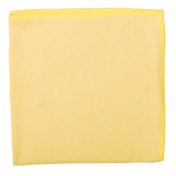Part 1: Terrace floors at a glance – the advantages and disadvantages
Today we are starting a new blog series about patio floors. In today's first part we will give you an overview of the different types of material that can be used as patio floors. We will also look at the advantages and disadvantages. In the next parts the focus will be more on cleaning. We will explain how you can quickly clean the various types of material and take care of them properly. Basically patio floors are made of wood, tiles, natural stone or even gravel coverings are possible.
General overview of the different types of materials
As already mentioned, various materials can be used for the patio floor. Decking made from wood or a mixture of wood and plastic gives the patio a warm look . Click tiles are ideal for those who live in a rented apartment or have little time. They are available in various designs, so there is something for every taste. In addition, they do not require a substructure and are quick to lay. Outdoor tiles, on the other hand, give a cooler look and a professional should be involved in laying them. Stone slabs are now also available in various designs. These are usually made from natural stone or concrete. The costs are usually higher for stone slabs, but they usually look very high quality . Finally, there is the option of laying paving stones, which have a harmonious effect when natural stone is used. Gravel and chippings are also conceivable and are also available in various designs. As you can see, there is something to suit every taste .
wooden decking
Wooden decking gives the terrace a warm look, but requires a stable substructure . This also means that laying them is much more complex and therefore costs higher. The natural material does not heat up in summer, so you can walk on the terrace barefoot without any problems . In addition to real wood, there is now a composite material made of wood and plastic. The advantage of the composite material is that it is much easier to maintain . Maintaining wood is complex and its durability is shorter compared to other materials.
A simple and quick solution – the click system
A simple and time-saving option is the click system. These are available in different types and materials. The advantage is that no substructure is required . If you move, they can simply be removed and reused. They are also lightweight and therefore ideal for balconies or roof terraces . The disadvantage, however, is that they sometimes do not look as high-quality as other materials and over time they could become unstable. You also have to be careful in summer, as the click tiles heat up depending on the material.
A weather-resistant option - tiles
Outdoor tiles are wind and weatherproof , but have a cooler appearance. In general, tiles are robust, durable and require little maintenance . Dark tiles heat up very quickly in summer and can also become lighter. You can choose between fine and coarse tiles. Ideally, laying them should be done by a professional , as some experience is required.
Stone slabs, porcelain stoneware or paving stones?
Stone slabs and porcelain stoneware are long-lasting and easy to care for . They are also frost-proof and very durable . There is something for every taste here too, as there is a huge variety of products. In general, stone slabs are easy to care for, but light-colored slabs are more susceptible to dirt and minerals quickly settle on dark slabs , causing light stains. As with other coverings, dark slabs heat up quickly and the patio cannot then be walked on barefoot. Another easy-care and robust alternative is paving stones. Each stone is unique and has its own shape and pattern. In addition to the individual design options, paving stones are weatherproof and therefore frost-proof . Here, too, however, laying them is a little more complicated.
A quick implementation with gravel and chippings
Finally, chippings and gravel coverings can also be used. This option is flexible and there is a great variety of designs here too. Even non-square terraces can be beautifully covered. The "laying" is very quick here because no substructure is required . The stones can simply be poured out. To prevent weeds from growing through the gaps, a water-permeable weed control fleece is recommended. The disadvantage, however, is that the stones do not form a solid base and are therefore less than ideal for tables and chairs.
That was part 1 of our patio floor blog series. We'll continue next week! We'll take a closer look at cleaning the different materials.



